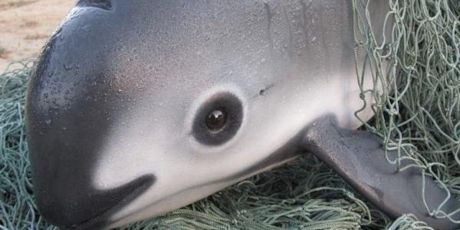
It is with heavy hearts that we bring you the news that the critically endangered vaquita, the tiny porpoise endemic to Mexico’s Sea of Cortez, now faces near certain extinction.
Last year, a multi-million-dollar rescue mission brought together scientists, veterinarians, and fishers in a bold, last-ditch attempt to save the world’s most endangered marine mammal. The plan aimed to rescue the sea's remaining vaquitas and relocate them to a sanctuary where they would be held until gillnets-- the largest threat to their survival-- were entirely eliminated from the Sea of Cortez. The mission was prematurely frozen as the first two individuals demonstrated a concerning response to captivity.
At the time of the rescue mission, there were 30 vaquitas left in the world.
Today, there are just 12.
The beloved “mini-dolphin” is an unfortunate example of how greed, ignorance, and inaction can conspire at the expense of wildlife. Its demise stems not from a demand for its own meat but for the meat of the totoaba, an endangered fish whose swim bladder is a delicacy in China. According to former smugglers, the prized organ can sometimes fetch thousands of dollars apiece. Although the totaba's endangered status has made fishing for it illegal, its tempting price tag means fishers will not stop trying to fulfill demand. And as they continue to use indiscriminate gillnets, they will inadvertently entangle everything else in their wake, including the vaquita.
The vaquita’s plight is simultaneously a cause for concern and an opportunity for change.
This is neither the first nor the last species to go extinct at the hands of humans; nearly two-thirds of wild animals have disappeared for good over the last 25 years, most of which can be attributed to human activities.
Many conservationists are now promoting an ambitious plan to prevent mass extinction by setting aside half of Earth’s surface for nature. The movement, called Half-Earth, was first proposed by Edward Wilson in his book by the same title. The premise stands that our efforts to preserve biodiversity must match the magnitude of threats against them, and that preserving critical ecosystem functioning requires vast and connected plots of land.